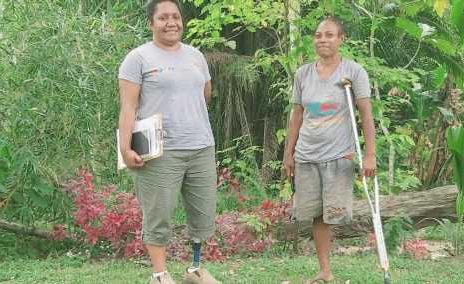
Clinical trials are critical to understanding the benefits of new treatments and medical therapies, but researchers say people who design and run clinical trials need to lift their game when it comes to recording and reporting harm.
In a Medical Journal of Australia article, the researchers examined how inadequate reporting may over or underestimate harm of treatments.
The article also includes recommendations on how clinical trial protocol and reporting guidelines can be improved. A more consistent and transparent way of reporting harm is important to help patients, clinicians and policy makers have the best possible data to base their decisions on.
“There are many benefits to being involved in clinical trials—they are an invaluable part of the development of new medical treatments and therapies,” says lead author Dr. Christina Abdel Shaheed from Sydney Musculoskeletal Health at the University of Sydney.
“Improvements in the reporting of harm is important to give participants more confidence in their involvement. It also creates more transparent evidence to guide safe and effective use of treatments for both the scientific community and for the public.”
In the medical field, harm can be classified as either “adverse events” or “adverse reactions.” Both terms describe untoward medical occurrences in a trial, but the second term is reserved for events possibly caused by the treatment.
Adverse events vary widely and can range from mild, such as headaches, to serious adverse events that result in hospitalization, disability, increasing the length of hospitalization, birth anomaly or death.
A key problem is that information on harm is absent or reported inconsistently in many clinical trials, warranting efforts to strengthen reporting of harm globally. This includes no universal definition of “harm” that applies to all treatments.
Another under-recognized problem is the lack of harm reporting in clinical trials that do not involve medicines. This problem is common in physical, psychological and behavioral trials. Examples include physiotherapy trials for back pain or behavioral therapy trials for attention-deficit/hyperactivity disorder.
Inconsistent reporting of harm in clinical trials creates an incomplete picture of a treatment’s risks, which has a downstream effect to researchers, clinicians and the public, when reviewing the available evidence on potential treatments.
The current reporting guideline in place for randomized controlled trials is the CONSORT checklist. While this encourages the reporting of harm in clinical trials, reporting practices are inconsistent globally. Details of the type of harm, and cause of serious harm is absent or inconsistent in published trial reports.
A possible contributor to the problem is that policy documents, for example from the National Health and Medical Research Council (NHMRC), define adverse events with regard to administering a medicine or medical device. The researchers say there is need for a broader definition of harm that applies to all treatments, not just medicines and medical devices.
The gaps in reporting of harm have been highlighted by recent large reviews, which reveal there are significant problems measuring and reporting adverse events in non-drug trials.
In 2021, a review of 249 trials evaluating exercise for chronic low back pain found that only 12 trials measured any adverse events in a consistent way.
In a 2022 review of psychological interventions for chronic back pain, only about 20 percent of the 97 trials included reported adverse events, and most reported that no adverse events occurred. Some researchers cite the “low risk” nature of the treatment as the reason for not collecting information on harm.
“This needs to change as it can help perpetuate a belief that non-drug treatments are generally ‘safe.’ We don’t actually know what the risks are if information on harm is not being collected and reported,” said Dr. Abdel Shaheed.
Change to guidelines need to start at the beginning
The researchers say change is needed from the very beginning, when planning a clinical trial not when the clinical trial has finished and is being reported.
“There is a need to improve transparency in clinical trial reporting, beginning from the trial design, registration and protocol development stages through to providing the summary of results and other trial materials,” said co-author Professor Andrew McLachlan, Head of School and Dean of Pharmacy at the University of Sydney.
“Clearer guidelines will support researchers to report the benefits and harm of new treatments in a balanced and authentic manner.”
The researchers have provided a list of recommendations on the reporting of harm in clinical trials to standardize reporting across all types of treatments being tested.
These include:
- Standard reporting strategy for all trials evaluating:
- medicines or medical devices (including complementary, alternative medicines)
- psychological or behavioral interventions (including digital therapeutics)
- surgical procedures
- physical therapies
Source: Read Full Article



